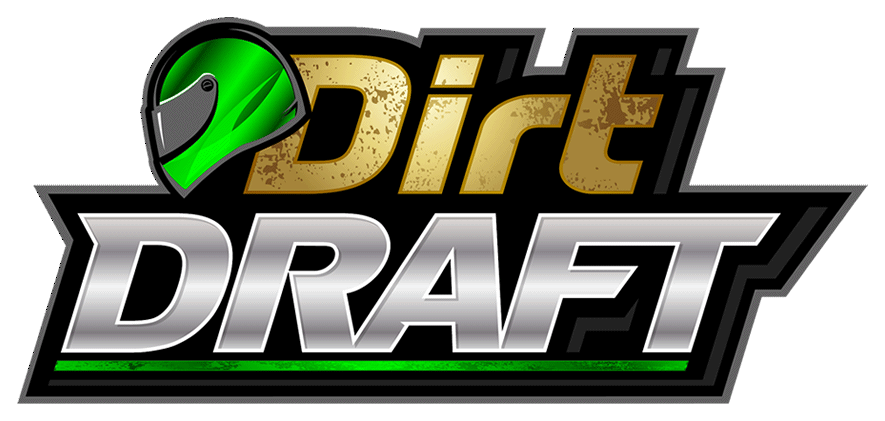
DirtonDirt.com exclusive
10th anniversary: Race coverage goes online
By Robert Holman
DirtonDirt.com weekend editorLynn Acklin admits that he misses newsprint. Acklin, the series director for the Southern All Star Racing Series, likely isn’t alone in his sentiments. But as the director of America’s longest continuously running Dirt Late Model series, he’s well aware of the Internet’s impact on the sport. | 10th anniversary coverage
Acklin, who is in his 26th season with the Southern All Stars, worked alongside series founder B.J. Parker, a pioneer in the area of short track promoting who dabbled in both asphalt and dirt racing during a storied career. Acklin was around when industry trade papers were at their zenith and he’s watched as those publications have dwindled in numbers, slowly consumed by the Internet.
That landscape has certainly changed, from the platform in which race fans receive their information to the length of time it takes for them to get it. What was once a week-long news cycle — or longer — is now a 24-hour news cycle — or shorter.
“As far as the change, it’s all this instantaneous, gotta-have-it-right-now news,” Acklin said. “With the racing trade papers, we had to wait for results from other parts of the country and now you know 15 minutes after the race is over with. I don’t know if that’s good or bad. It takes away from wanting to know. The way I grew up with it, you waited a week before you found out who won over in Georgia or the Carolinas or whatever.”
A 2008 survey by the Pew Research Center — a Washington, D.C.-based think tank that studies “the state of news and information in a changing society, including how news is consumed” — the Internet has surpassed all other media except television as an outlet for national and international news.
As the Internet gained steam, interest in print media began to waver. Part of that was because of the ability to get specialized content. Rather than buy a Sunday newspaper with 12 uniquely different sections, nine of which may go unread, an avid sports fan could turn to the Internet for their sports coverage. As web-based content continued to grow, a football fan suddenly had the ability to hone in specifically on a favorite team rather than weed through the entire line of boxscores. The internet helped streamline things for rabid fans.
According to BusinessInsider.com, by 2009 more than 100 newspapers had been shuttered and 23 of the nation’s top 25 newspapers reported circulation declines between 7 and 20 percent. While the auto racing industry often trails national trends by three of four years, the Pew Research Center’s ’08 survey rang true as more and more race fans turned to the Internet for information.
As DirtonDirt.com reaches its milestone 10th anniversary, there’s nothing to suggest the trend will be reversed. Fans and drivers who used to subscribe to industry trade publications to get results and find information on upcoming events are now turning online.
“I had two or three (papers) at one time,” said Alan Holmes, a Fayetteville, Tenn., engine builder who has operated Lincoln County Auto Parts for 39 years. “Of course you’re racing, so you flip through it right quick and find the thing you want to look at and then the rest of it you may never look at it and some of it you might.”
Holmes, 59, began racing when he was 35, which is late by today’s standards. In the early ‘90s he drove a Late Model before toiling in the open wheel ranks for nearly a decade, winning seven track championships along the way. He climbed back into a Late Model and raced another nine or 10 years running primarily at Winchester (Tenn.) Speedway before stepping away from driving three years ago.
Holmes said his travels while campaigning his open wheel often took him west to tracks like Batesville (Ark.) Motor Speedway and the old Poinsett County Speedway in Harrisburg, Ark. Had it not been for the racing publications he subscribed to, he may have never known about events some 400 miles from home.
“The racing papers is where I looked at to see where I was gonna go,” said Holmes. “I went to the Cow Patty 50 out there at Poinsett County back then. It’s called something else now. I went out there to that race, and I wouldn’t have found it without the racing paper, ‘cause didn’t nobody call you and say, ‘hey, we’re having a race out here.’ You didn’t look at Facebook ‘cause there wasn’t no Facebook. You didn’t look on the Internet. You might see it on midsouthforums.com, maybe there. That’d be my only other source. But you don’t see results on there much anymore.”
Holmes has been a DirtonDirt.com subscriber for more than six years. Although he doesn’t race anymore, he still builds race engines for competitors in Middle Tennessee and he still enjoys keeping track of events outside his native region.
“I look at Facebook at least once a day. I might look at it more than that,” said Holmes. “I watch a few videos on Facebook. I look on DirtonDirt just about every Saturday morning and Sunday morning, and if it’s a holiday weekend, then I’ll add the Monday morning. A lot of times I can’t watch all that stuff at once so I may come, like at my lunch time, and turn a race on while I’m eating and watch a race during lunch.”
There was a time when stacks of newspapers sat in racer’s shops, shops like the one Holmes operates. Most were racing industry trade papers, from weekly publications to monthly publications. They’d stay there for weeks at a time until another batch arrived in the mail. Holmes said he wouldn’t dare try to compare flipping through those papers to flipping on his computer and clicking the DirtonDirt.com link.
“It ain’t no comparison,” said Holmes. “Back then, you’d hear somewhere that Scott Bloomquist won a race somewhere and it’s three weeks before you get to see what happened. Or if somebody crashed or something, you didn’t find that information out for awhile. Now, man if they crash, you’ll find out in 30 seconds.
“When new stuff starts coming, you know the other is fading away. Why have a paper that when you get it and read it, when you read it you already know all about it? I’d get Motorsports Weekly and see something I’d done seen a week and a half ago. I wouldn’t even buy one now. If they’d give ‘em to me I guess I’d take ‘em. By the time you get them you might not know every little detail, but if I’m watching a race, I really don’t care who’s running last, unless the last 10 cars are racing for a position.
“When you watch a race, you want to see a race and DirtonDirt does that. If Scott Bloomquist gets way out in the lead and these guys are racing for second and third, they’re showing the race. They’re not showing Scott Bloomquist making laps by himself, because that’s not interesting.”
Acklin said it’s been far from an overnight transition for his organization. For awhile the Internet and the trade publications co-existed. Before DirtonDirt.com there were — and still are — a number of online message boards where fans flocked to to grab snippets of information.
“It’s changed it a whole lot. With Twitter, the internet, Facebook … it’s changed the way we do business too,” Acklin said. “We had to balance between the print publications and the (4m.net) and I think Todd Turner had (DirtNews Digest) going on and the (midsouthforums.com) board, just stuff like that. I think the message boards are dying down because everybody has access to the social media and stuff.”
Message boards became breeding grounds for lively debates, racing results and other fodder, but the format leans more toward social media than news reporting. Continued advancements in technology, like better, faster Internet service and high definition cameras, helps online news organizations push the envelope and separate themselves from the pack.
“We have sped up the information,” Acklin added. “In the old days we didn’t know anything until we came back home and called people and talked about it. Then we had trade papers and we had to wait on them. Then we got cell phones and we could start calling each other after the races to see what happened.
“Well now you have instantaneous stuff with Twitter, Facebook and everything like that. Now you know before you get in the truck to leave to go home. When it’s over with, you can look on your phone to see so-and-so won Talladega.”
While that influx of on-demand information is great for drivers, sponsors and fans, the journalists covering the sport — the men and women who successfully made the transition from the print medium to the internet — are working harder than ever. For reporters and photographers — and now videographers as well — making sure information is both accurate and available in a timely fashion means already late nights at the track are now even later. Twenty years ago, a writer or photographer would go the the track, watch the race, take notes, conduct interviews and then often have two or three days before deadline. They’d cover two or three races a weekend — maybe more — and could go back to the office where they could arrange their notes and then knock out the final product, sometimes after a couple days of reflection. Like the newspaper they used to work for, that luxury is a thing of the past.
To keep the endless news cycle going and to make sure readers can peruse a plethora of results as they drink their morning cup of joe, those same writers, photographers and videographers now have to write their stories and edit their pics and video as quickly as possible at the conclusion of an event.
Time is of the essence, which means sleeping is sometimes put on hold in lieu getting the information on the web. It’s the byproduct of an ever-changing industry.
“These (young drivers) haven’t even seen no trade paper,” Acklin said. “They don’t know what a trade paper is. They’ve grown up on the Internet. Here I am, I grew up in the trade paper world, having to convert to the internet world and it’s a whole new ballgame. The ones that you talk to now, they’ve see it all on the internet.”

















































